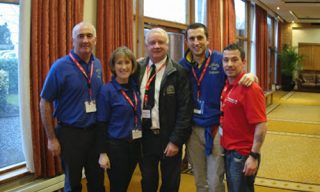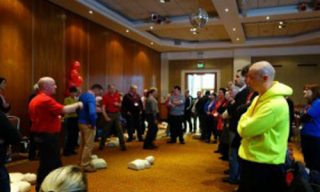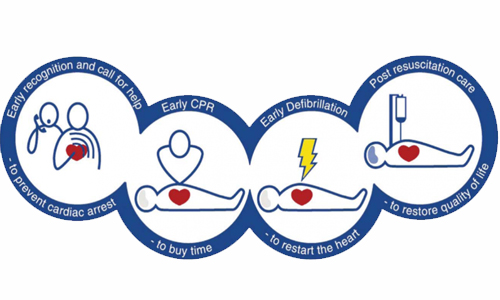CFR Ireland
Community First Responders
How to set up a CFR scheme
When you first decide that you wish to set up a CFR group in your community you should contact the National Ambulance Service cfr@hse.ie. Let them know what you are trying to do. They can advise you and introduce you to the local NAS Ambulance base Officer (ORM – Operations Resource Manager).
You should then hold a Public information meeting to progress the setting up of the scheme.
You will need the following members on a committee:
- Chairperson
- Vice Chairperson
- Treasurer
- Training & Development Officer
- Assistance Training & Development Officer
- PRO/Sponsorship Officers (3)
- Medical Director
- Coordinator
A sample constitution will be available from CFR Ireland.
The Group will also need to decide whether they wish to be “CFR Basic” i.e. the Group will be dispatched to Cardiac Arrest and Choking calls only or do they wish to be “CFR Enhanced” i.e. your CFR Group will be dispatched to Cardiac Arrest, Choking, Chest Pain and Stroke calls only.
For further assistance in setting a CFR Group you should also contact other Community First Responder Groups: see our website for details of established schemes.
You will need to organise fundraising locally. This will also increase public awareness of the group. Community grants may be available so check this out with your local council office.
The National Ambulance Service Ambulance will advise on the administration and training required. A representative from a nearby Community First Responder Group would be delighted to help you. Source a local and suitable venue for training e.g. school hall, community hall etc.
When recruiting be aware that a reasonable level of fitness is required. A CFR should be able to carry a 15/20kg kit bag and perform CPR for 20 minutes. Try to recruit 15/20 members. This number generally makes 24/7 cover easier and allows more options during holiday periods.
Increase awareness in the community through every means possible, e.g. newspaper notes, fliers, parish newsletter, shop window display, etc.
CFR’s must be over 18 years of age and will require the following:
- Full Driving Licence
- ID Photo x 2
- Proof of Garda Clearance (optional)
- Confirmation letter from Motor Insurance Company
- Signed copy of NAS Confidentiality Document
Prepare local maps with house numbers and names, check with local Post Office. NAS will advise on equipment needed.
How much time is involved? As little or as much as you can give.
If you cannot train or are unable to go “Call Outs” you can help with the fundraising, administration, etc.
DSC01989 Remember before you set up there was nothing there. Some points:
The minimum training level for a First Responder to be dispatch by National Ambulance Service (NAS) is the Pre-Hospital Emergency Care Council (PHECC) Cardiac First Responder course (CFR). There is no problem with EFRs, EMTs OPAs etc. being in the Group, but, the NAS Community First Responder Policy states that the NAS CFR clinical indemnity covers Community First Responder up to Cardiac First Responder Clinical Practice Guidelines (CPGs) only.
When dispatched by NAS, you must stay within Cardiac First Responder training CPGs. Equipment permitted in the kit bag, is covered in the NAS CFR Policy, an AED, mobile phone, pocket mask, gloves, aspirin, etc. For the NAS Community First Responder Policy click here
This is your community first responder scheme. You will do all the work, the administration, the fundraising, the knocking on doors etc. There is a bit to do in the setting up, there is help available, but once it is up and running it is straight forward enough.


CFR Ireland
ABOUT CFR
Founded
Number of Groups
Number of Volunteers
AED Registered

CFR Ireland
Chain of Survival
The chain of survival refers to a series of actions that, when put into motion, reduce the mortality associated with cardiac arrest.
Like any chain, the chain of survival is only as strong as its weakest link.
CFR Ireland
Citizen CPR
Citizen CPR (Cardiopulmonary Resuscitation)
The Pre Hospital Emergency Care Council, in an effort to encourage bystander CPR or CPR by untrained persons, where a person had collapsed, ran a Television Advertising campaign to promote Citizen CPR.
CFR Ireland
JOIN OUR NEWSLETTER
